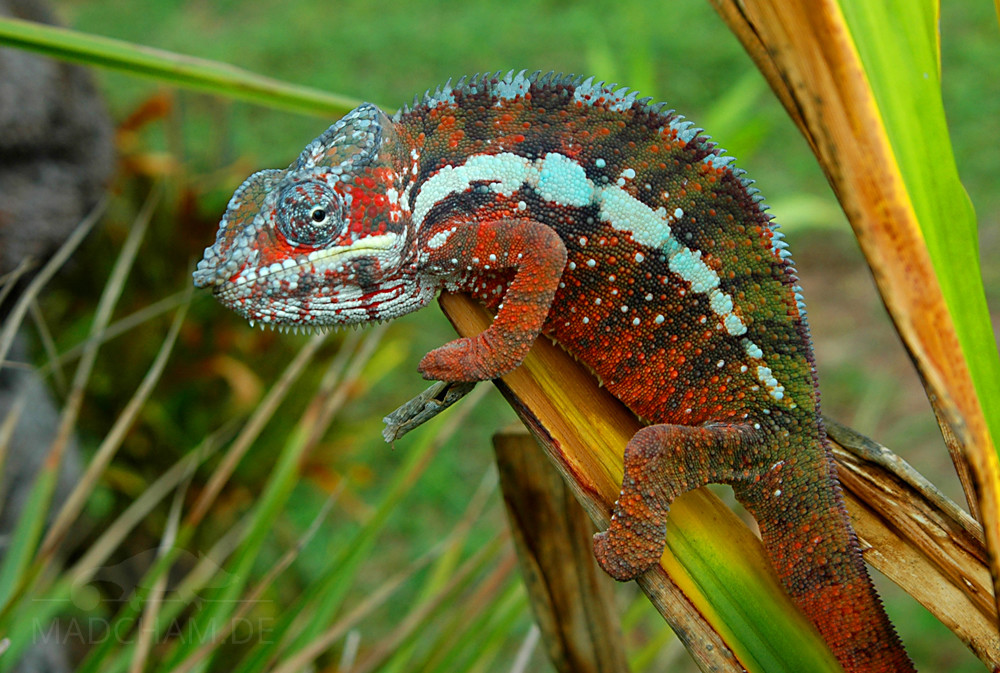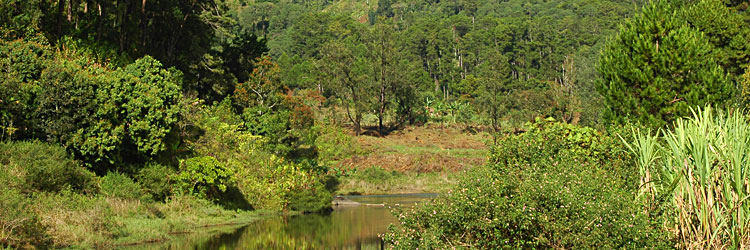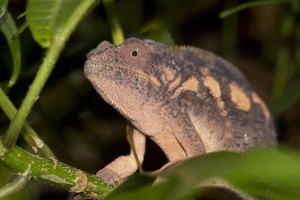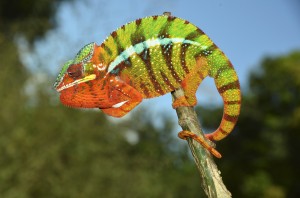Distribution of the local form Antalaha:
Antalaha is located in northeast Madagascar in the region of Sava. With approximately 35.000 inhabitants, it is a rather large city, but up to date, it is difficult to reach. The land route leads from Ambilobe via Vohémar, but this road is hardly drivable. The following road from Vohémar to Antalaha instead is in a relatively good condition. Although Antalaha once had an airport, it has not been in use for years. So what rests is the riverway from Maroantsetra by boat (about 24 hours) or from Toamasina (Tamatave, about 3 days driving time by boat). The inhabitants of Antalaha mainly subsist on the many plantations in the area which mainly harvest vanilla, but also cocoa, Ylang-Ylang or litchis.
You can find panther chameleons in Antalaha along the beach and in many, relatively open vegetation areas, sometimes even in the shrubs between the huts at the edge of the city. In south Antalaha, there flows a big river called Onive, where this local form finds its natural barrier. These specimen thus cannot mix with the local form of Cap Est. West of Antalaha, the Masoala peninsula has another own local form of panther chameleons.
Appearance of the local form:
The males here wear predominantly red colors with white and partially blue color accents. Sometimes the red color blends into orange and green.
Weight table
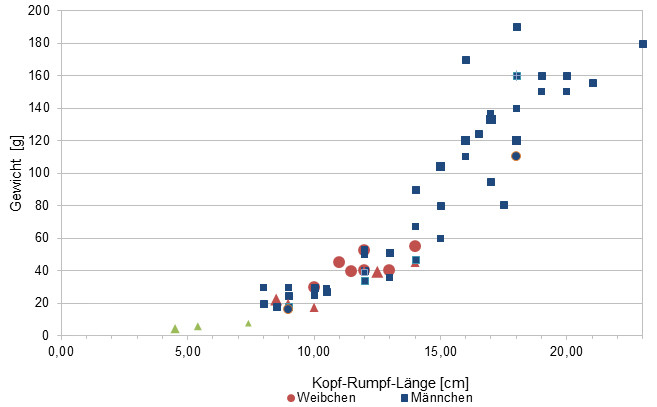
Gewicht = weight in grams, Kopf-Rumpf-Länge = snout-vent-length in cm, Weibchen = females, Männchen = males
Since 2015, we have been measuring the weights of chameleons found by us in Madagascar, as far as the animals (and our scales) participate. In the long term, we aim to obtain an average weight in relation to snout-vent-length (measured from the tip of the nose to the cloaca) for each species from as many measurements as possible. It is important to know that all weights were measured towards the end of the rainy season (= best food supply), so these should be maximum weights on Madagascar. Triangular symbols in females mean not pregnant, round symbols mean pregnant. In Furcifer pardalis, contrary to our original assumption, it has so far turned out that there are no serious differences in the ratio of SVL to weight between the individual local forms.
| Jan | Feb | Mar | Apr | May | Jun | Jul | Aug | Sep | Oct | Nov | Dec | |
| Average temperature | 21 | 23 | 24 | 23 | 25 | 22 | 22 | 22 | 22 | 24 | 25 | 27 |
| Minimum temperature | 21 | 21 | 21 | 20 | 20 | 17 | 17 | 16 | 17 | 18 | 20 | 20 |
| Maximum temperature | 29 | 29 | 29 | 29 | 28 | 26 | 26 | 27 | 38 | 38 | 29 | 30 |
| Rain days | 24 | 26 | 23 | 15 | 18 | 17 | 15 | 13 | 17 | 10 | 18 | 25 |
We have collected the data given above over several years with thermometers and hygrometers at the finding places of the chameleons. "Average temperature" means that values of a whole month have been calculated to one average value per month. For example all measured minimum temperature values of February have been calculated to one average minimum temperature for February. In plain language, this means single peak values of a day may be a little higher or lower than the average minimum and maximum temperatures. It is possible that a location has an average maximum temperature of 29°C, but one day during that month it had 33°C or even 35°C there.
In Antalaha, it is warm with temperatures around 25°C all year long. In sunny places, temperatures may reach above 30°C easily. In the night, temperature drops a little, but in rainy season does not fall below 20°C. In dry season from April to September, climate is somewhat cooler, at night and during the day.
In Antalaha, it rains a lot and daily during rainy season, sometimes even without a stop for days. Humidity increases enormously and makes chameleons mate. From April on, it rains less but still on a regular base, so Antalaha always remains green.
Habitat:
The habitat of panther chameleons in Antalaha solely consists of secondary vegetation. Shrubs, bushes, fruit trees and tamarinds – they use everything that offers enough coverage and is well to climb.

